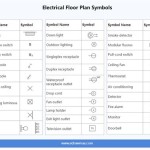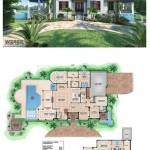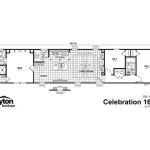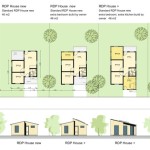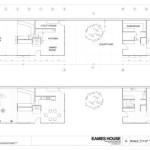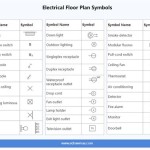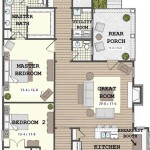Grain Bin Home Floor Plans: Exploring Unique Living Spaces
Grain bin homes represent a distinctive approach to residential architecture, repurposing agricultural structures into comfortable and aesthetically appealing living spaces. The circular shape inherent in grain bins presents both challenges and opportunities in designing effective floor plans. Understanding the potential and limitations of this unique architectural form is crucial for anyone considering a grain bin home conversion.
The cylindrical nature of grain bins necessitates careful consideration of space utilization. Traditional rectangular furniture and room layouts require adaptation to fit the curved walls. However, innovative design solutions can transform this constraint into a stylistic advantage, resulting in a home that is both functional and visually striking. This article explores key considerations and approaches to creating compelling grain bin home floor plans.
Maximizing Space and Functionality in Circular Structures
The fundamental challenge in designing a grain bin home floor plan is effectively utilizing the circular space. Unlike rectangular rooms where furniture can be easily aligned against straight walls, curved walls present a different set of constraints. The central area of a grain bin can often become underutilized if not properly planned. Therefore, strategic furniture placement and room arrangement are paramount.
One common approach involves placing functional areas, such as kitchens and bathrooms, along the exterior walls, utilizing the curvature to define the space. Custom-built cabinetry and shelving that conform to the circular wall shape can maximize storage and minimize wasted space. Conversely, open living areas can be situated in the center of the bin, leveraging the uninterrupted space for a sense of spaciousness.
Another important aspect is the consideration of vertical space. The height of a grain bin allows for the creation of multi-level living areas. Lofts can be incorporated to provide additional bedrooms, offices, or recreational spaces. Spiral staircases are a popular choice for connecting different levels, as they efficiently utilize the limited floor space and complement the circular aesthetic.
Careful planning of doorways and hallways is also necessary. Traditional rectangular doorways can create awkward angles and wasted space. Arched doorways or custom-designed openings that follow the curve of the bin can blend seamlessly with the overall design. Hallways should be kept to a minimum to maximize usable living space; open-concept designs are often preferred to avoid the need for extensive corridors.
The placement of windows and skylights is another critical factor. Strategically positioned windows can bring natural light into the interior, enhancing the feeling of spaciousness and providing views of the surrounding landscape. Skylights can be particularly effective in illuminating the central area of the bin, reducing the need for artificial lighting. The size and placement of windows should also take into account energy efficiency, minimizing heat loss in colder climates and preventing overheating in warmer climates.
Adapting Traditional Room Concepts to Circular Spaces
Converting a grain bin into a home requires adapting traditional room concepts to the unique circular form. The kitchen, for example, typically benefits from a layout that follows the curve of the wall. Semicircular countertops and custom cabinets that fit snugly against the wall can create a functional and aesthetically pleasing cooking area. Islands or peninsulas can be used to provide additional workspace and storage, while also defining the boundary between the kitchen and other living areas.
Bedrooms in a grain bin home often utilize the perimeter walls, allowing for the bed to be positioned against the curved surface. Built-in shelving and wardrobes can be incorporated to maximize storage and minimize the need for bulky, freestanding furniture. The central area of the bedroom can be left open, providing space for a seating area or a dressing table.
Bathrooms also require careful planning to accommodate plumbing fixtures and ensure adequate space for movement. A curved shower stall or a freestanding tub can complement the circular aesthetic. Wall-mounted sinks and toilets can save space and create a cleaner, more modern look. Proper ventilation is crucial to prevent moisture buildup in the enclosed space.
Living areas can be designed to maximize the open space in the center of the bin. Circular sofas or sectional couches can be used to create a comfortable seating area. A round coffee table can complement the overall design and provide a functional surface for drinks and snacks. The absence of corners allows for a more fluid and sociable atmosphere.
Home offices can be integrated into the grain bin home by utilizing a loft space or a dedicated area along the perimeter wall. Custom-built desks and shelving can be designed to fit the curve of the bin, providing a functional and organized workspace. Proper lighting and ventilation are essential to create a comfortable and productive environment.
Addressing Structural Considerations and Building Codes
Before embarking on a grain bin home conversion, it is essential to address structural considerations and comply with local building codes. Grain bins are typically designed to withstand the weight of grain and agricultural conditions, but modifications are necessary to make them suitable for residential use. This often involves reinforcing the structure to meet the requirements of residential building codes.
The foundation is a critical element of any grain bin home. A concrete slab foundation is commonly used to provide a stable and level base for the bin. The foundation should be properly insulated to prevent moisture and heat loss. In some cases, a raised foundation or a basement may be constructed to provide additional living space or storage.
Insulation is another essential consideration. Grain bins are typically made of metal, which is a poor insulator. Adequate insulation is necessary to maintain a comfortable interior temperature and reduce energy consumption. Spray foam insulation is a popular choice because it effectively seals the seams and crevices of the bin, preventing air leakage. Other insulation options include fiberglass batts and rigid foam boards.
Proper ventilation is also crucial to prevent moisture buildup and ensure good air quality. Exhaust fans should be installed in bathrooms and kitchens to remove moisture and odors. A whole-house ventilation system can be used to circulate fresh air throughout the home. Adequate ventilation is particularly important in well-insulated grain bin homes to prevent the development of mold and mildew.
Compliance with local building codes is essential to ensure the safety and legality of the grain bin home conversion. Building codes vary depending on the location, but they typically address issues such as structural integrity, fire safety, plumbing, electrical wiring, and energy efficiency. Obtaining the necessary permits and inspections is crucial to avoid legal problems and ensure that the home meets all applicable safety standards.
Modifying the structure of the grain bin often requires the assistance of experienced professionals. Structural engineers can assess the existing structure and recommend appropriate modifications to meet building code requirements. Architects can help to design the floor plan and ensure that the home is both functional and aesthetically pleasing. Contractors with experience in grain bin home conversions can provide valuable expertise in the construction process.
In conclusion, designing a grain bin home floor plan requires careful consideration of space utilization, adaptation of traditional room concepts, and attention to structural and building code requirements. By embracing the unique challenges and opportunities presented by the circular form, it is possible to create a comfortable, stylish, and sustainable living space that reflects individual tastes and preferences.

Grain Bin Cabin Plan Bottom Floor Top Is Bedroom Silo House Plans

Sized Just Right Home Plan Grain Bin House Floor Plans

Grain Bin Cabin Plan

The Classic Plan Grain Bin House Round Plans

The Classic Plan Silo House Grain Bin Round Plans

Custom Floor Plans Modern Prefab Homes Round House Grain Bin

Grain Bins As Affordable Housing Natural Building Blog

Charming Victorian Farmhouse With Unique Silo Design

Grain Bin Cabin Plan

House In A Can Austin Mergold Archdaily

